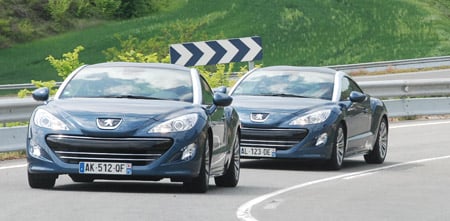
Local brand handlers Nasim has done a brilliant job at providing us with very well specced and very well priced Peugeots that don’t require car buyers to fork out extra for a European alternative, something Malaysians have been forced to accept for so long.
The 206 Bestari started the ball rolling by providing something classy in the budget segment, but it was the introduction of the 308 that propelled Peugeot into the minds and shortlists of carbuyers, and into Japanese territory.
But I am going to be honest and say that the 308 doesn’t at all move me, someone who leans more on the Continental side of the argument when it comes down to Europe vs Japan. While the 308’s sheer value can’t be ignored, it doesn’t offer much to the keen driver – while the engines are good – strong, smooth, and quite fast in the Turbo’s case – every other driving aspect isn’t. Even the 175 bhp 3-door GT doesn’t really cut it as a hot hatch.
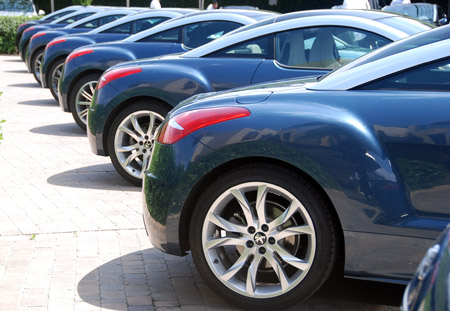
Shoulder to shoulder in the real world (against fellow European C-segment hatchbacks, not Civics and Corollas) the Pug is no where near a Golf Mk6 in overall ability and is unenjoyable to drive next to the Focus. The deal breaker for me is that awful “Porsche” auto ‘box, not so much for its lack of ratios (only four) but for the slack and being so clueless.
Casting a wider net, there’s still nothing in Peugeot’s current range that’s desirable to this writer – could the RCZ change this skeptic?
We were privileged to sample Peugeot’s latest pride and joy at the RCZ’s international launch in northern Spain last month, and here’s the report.
Continue reading after the jump.
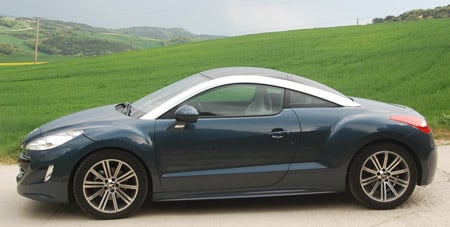
Styling – Concept made good
To say that it’s like driving a concept car is no exaggeration. Three years ago, Peugeot showed off the RCZ concept at the Frankfurt Motor Show, and we’re pleased to report that it had survived the transition from concept to production intact. The show star was very well received, and Peugeot made a conscious effort to retain what was special about it when they could have so easily bottled out, citing reasons like high cost (or impractical, or too niche) – stale excuses given when production cars don’t turn out like they were supposed to.
Now, what so special about the RCZ, some may ask. Isn’t it just a TT rip off? At first glance, from pictures, we don’t blame you for making that assumption, but as you slowly take in the details of this car, you’ll realize that the only thing in common with the Audi is that both are compact coupes.
Even the proportions differ – the RCZ has a longer rear deck compared to the stubby tail of the second-gen TT, which could lead some unsuspecting observers to think that it’s mid engined.
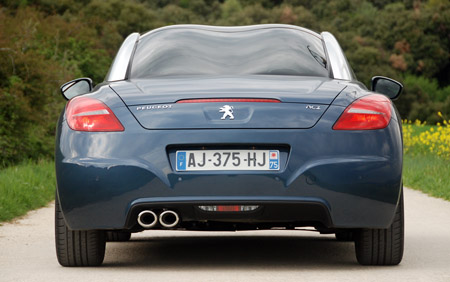
Just like the concept car, the road going RCZ’s stylistic highlight is the race inspired double bubble roof. It’s already relatively complicated and a hassle to produce compared to a standard tin top, but the roof curves extend into the rear glass, which is quite a feat for a mass produced car. The RCZ is contract manufactured by Magna Steyr in Austria, which is used to making complicated things work – they’re the people responsible for the Mercedes SLS AMG’s gullwing doors and also build the Aston Martin Rapide, so the RCZ is in good hands.
Another sure thing to draw your eye are those (nicely brushed) aluminum rails that outline the roof. That, and the prominent, muscular rear haunches, gives the RCZ a tougher look than the TT. I’m not a fan of the big mouthed Peugeot corporate face, but can accept it when stuck on a body like this. By the way, the RCZ, which is the only current Peugeot passenger car without numbers in its name, is the first model to wear the updated lion badge.
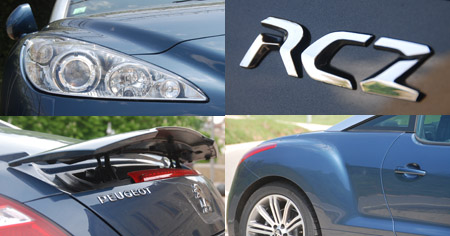
The rear end, which has hints of Porsche from certain angles, gets an active rear spoiler that raises according to speed. The first position (19 degrees) is raised at 85 km/h and folds back when you dip below 55 km/h, while the second position (34 degrees) is activated when you pass 155 km/h, returning to Position 1 at 145 km/h. To impress others, RCZ drivers can manually erect the spoiler via a button in the cabin.
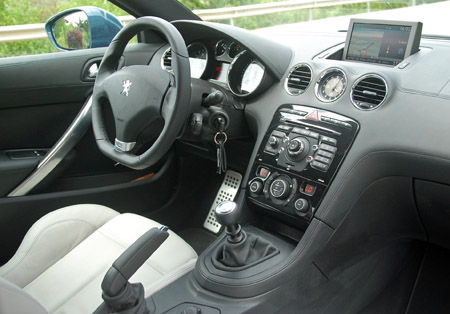
Cabin – No surprises
If you’re expecting a similarly arresting cabin design after the flamboyant exterior, be in for a disappointment, perhaps the same feeling that struck yours truly when he first sat in the VW Scirocco two years ago. But unlike the VW, the standard 308 dashboard design is actually very classy and pleasant, and while the changes compared to the 308 hatch are small, they’re effective in making the environment that bit more special. Our test car’s dash was covered with optional leather while the centre console had piano black finish and a stereo layout that looks much more cohesive and modern than the stacked arrangement in the 308.
The instrument faces have a sportier design and the middle unit of the three central air vents has been removed and is now filled by a clock. Peugeot could have used this opportunity to collaborate with a watchmaker – a nice brand here would have been a real treat.
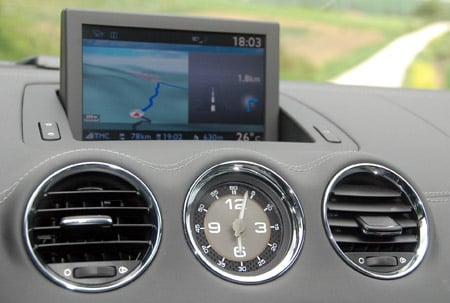
The seats provide enough support, but are supple enough for long distance comfort. I don’t particularly like black headlining, as it tends to bring an overly aggressive and sometimes oppressive feel, but the RCZ’s cabin escapes this thanks to a relatively large glass area for this type of car. It’s certainly more easy going and airy than the TT.
Speaking of the TT, while the Audi’s rear quarters are basically pointless, my 175 cm frame just about fit in the RCZ’s thinly padded and upright rear seat, albeit with head touching the glass. Kids or petite adults should be OK for short distances back here, and the “occasional” tag is fitting. Remember that it’s a 2+2, not a full four seater. The 384-litre boot meanwhile is surprisingly large and well shaped for such a car, even before folding down the rear seats. Do so and you’ll get 760 litres of space, which is quite amazing.

The one major complain both me and my driving partner had was with the RCZ’s super thick A pillars, which made seeing around bends harder than it should be. Visibility is otherwise excellent; the big wing mirrors gives a great view of the wide rear haunches, which adds to the sense of occasion, and as mentioned, the windscreen is quite large for a small coupe.
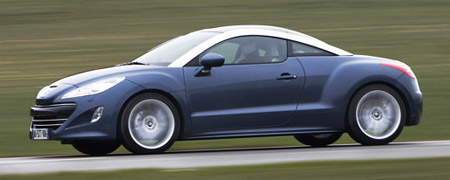
On the move – Breaking speed limits without breaking sweat
The fact that the RCZ is a different sort of animal from the TT surfaces again when you start to drive it. It immediately doesn’t feel as manic and super sharp as the Audi, and all the better for it I reckon. Don’t misread that as slow though, because the range topping 200 THP engine with 200 bhp and 275 Nm makes the RCZ a brisk car to drive, even if the pace isn’t as noticeably explosive as the VW Group’s 2.0 turbo. The raw figures confirm this: 0-100 km/h is 7.5 seconds on to a top speed of 240 km/h.
The 200 THP from the BMW-PSA Prince engine joint venture is one of the brightest examples of downsizing in existence, producing that sort of figures from 1.6 litres. It’s as modern a petrol engine can get, with twin-scroll turbocharging, direct injection and variable valve timing/lift. Twin-scroll turbos groups the exhaust ports into pairs, directing more constant and stronger flow towards the turbine for maximum boost. Peugeot also makes loud noises (pardon the pun) about Sound System technology, where a diaphragm works as a resonator to create sound amplified by an acoustic duct during intake and acceleration.
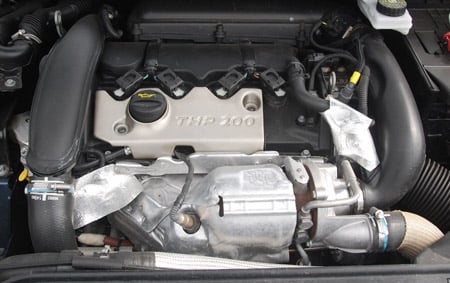
Yes, there’s a deeper and more audible sound when you step on it, and while we appreciate the vocal encouragement, the sound isn’t the most melodic an engine can make (it’s a small four-cylinder after all). It quietens down when you’re cruising, of course. However, the 200 THP engine loses the turbo wooshing sounds 308 Turbo owners are familiar with.
Like lower powered siblings in the Prince engine family, the 200 THP is smooth revving and turbo lag isn’t an issue. But what I loved most about the range topping RCZ is the engine’s fantastic flexibility. Even if you’re doing 50 km/h in fifth, it’ll still trundle along without coughing and pull away cleanly when you jab the gas pedal. Fast highway cruising done is extremely relaxed fashion, no downshifting is needed at all if you anticipate traffic well. Fits my regular driving style like a glove.
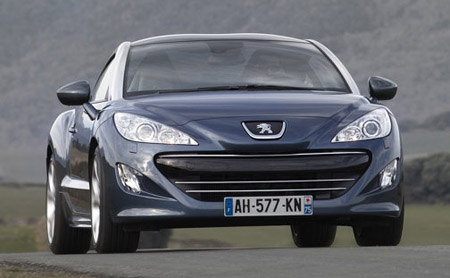
Driving department – Non hardcore satisfaction
But when we moved off the highway to narrow, winding Basque country roads (didn’t encounter any renegade separatist, thankfully), the engine stepped out of its easy going mode into race mode with ease, aided by the standard six-speed manual gearbox. While the shift action isn’t the slickest we’ve tried, it’s still fun to snick through the gears manually in a car like this. Some complained of slight notchiness; I say it’s not the most conducive for fast work. Want to try for yourself? Go test drive the 308 GT – the RCZ’s feels just like it.
I personally won’t consider a small sports coupe like the RCZ with a torque converter auto, but I know not many are with me on this. Peugeot knows this for a fact too, and when this engine makes its sales debut in the RCZ later this year, it’s likely to be also fitted with a six-speed automatic, and that combo is the one Nasim is eyeing for Malaysia. The auto ‘box is claimed to be highly efficient and quick.
Will it be anything like the poor autos we’re used to from Peugeot? Not likely, because this AT6 slushbox is made by Aisin of Japan. Manual loyalists, pray hard.
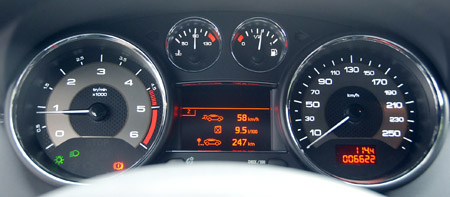
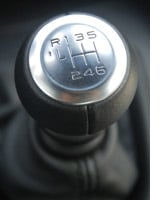 So far so good, but how does the RCZ drive? It’ll be a wasted opportunity if it drives anything like the 308, which is a real fear since this coupe sits on the same “Platform 2” as the 308 and Citroen C4 and share the basic suspension setup – front MacPherson struts and rear torsion beam. Some among us treat “torsion beam” like a bad word, but if you’ve driven a well set up torsion beam suspended car – the Renaultsport Megane R26 comes to mind, the 308 range is not – the bias fades away.
So far so good, but how does the RCZ drive? It’ll be a wasted opportunity if it drives anything like the 308, which is a real fear since this coupe sits on the same “Platform 2” as the 308 and Citroen C4 and share the basic suspension setup – front MacPherson struts and rear torsion beam. Some among us treat “torsion beam” like a bad word, but if you’ve driven a well set up torsion beam suspended car – the Renaultsport Megane R26 comes to mind, the 308 range is not – the bias fades away.
Anyway, unique spring and damper rates, wider tracks and the RCZ’s naturally low centre of gravity all combine to ensure that the RCZ flows down a B-road (or any road for that matter) with much more finesse than a 308 can ever dream of, which means that the RCZ doesn’t thump and hop its way around. It has a softer gait than either TT or Scirocco without being mushy, and rode very comfortably throughout our test route – only once or twice over bigger ridges or bumps did we feel the whack. 18 and 19-inch wheels are available, our test car had the former, and so will Malaysia bound cars. Grip is great.
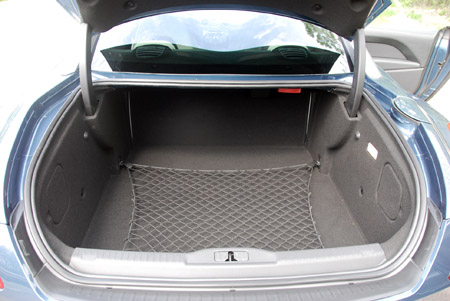
The steering is improved over the 308; there’s slightly more feel (could still do with more) and the weighting/sensation is more natural. I also find the helm to be friendlier than the quick and sharp but artificial feeling steering of the TT.
All in all, the RCZ is a fast and satisfying car to drive, and not just when you’re in the mood – though it doesn’t look it, the RCZ is a sports car that will do daily duties without you, or it, complaining.
HDi diesel engine – Won’t be coming
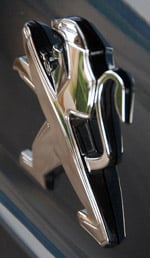 We also got to sample the RCZ with a 2.0-litre HDi FAP diesel engine. As expected, it’s very torquey with 340 Nm available from 2,000-3,000 rpm (power is 163 bhp), but I was pleasantly surprised with its eagerness to rev.
We also got to sample the RCZ with a 2.0-litre HDi FAP diesel engine. As expected, it’s very torquey with 340 Nm available from 2,000-3,000 rpm (power is 163 bhp), but I was pleasantly surprised with its eagerness to rev.
This variable geometry turbo engine was happy to indulge my right foot, revving cleanly to 4,500 rpm, although there’s not much point taking it that far – 4,000 revs is a better point to shift up. And while the clatter can be heard outside, it’s sounds pretty decent from inside the cabin, certainly less diesel-like than the Focus TDCi, a car that uses an engine from the same joint venture diesel engine family as this Peugeot HDi FAP.
The HDi makes the RCZ an even more effortless car to drive quick, and claimed combined consumption of 18.9 km/l (claimed figure for 200 THP is 14.5 km/l) wraps up the great package. However, if you’re really pushing on in serious attack mode, the petrol is more satisfying and effective. Here, we had a smaller rev range to play around with, and constant gear changing was required. The car’s front end felt a touch more heavy too, although the difference isn’t night and day.
Both the HDi and the entry level petrol powered RCZ which we didn’t try (similiar tune to the Peugeot 3008 spec – 156 bhp, 240 Nm, 14.9 km/l) doesn’t come with the 200 THP’s Sport pack, which includes larger front suspension pivots (from the 407), additional lower bracing bar and larger front brake discs (340 mm vs 302 mm).
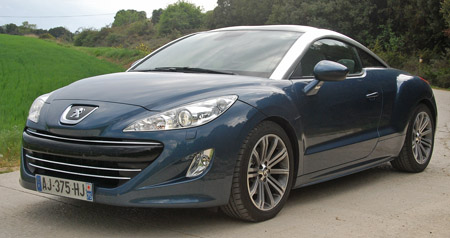
RCZ – More than just a cheaper TT
Conceptually, the RCZ is closest to the Audi TT (which is why we referred to the Audi so much in this report) but must also take on the VW Scirocco, which is priced at RM244K in Malaysia. The Peugeot will undercut the expensive TT by a big margin when it arrives at the end of this year or early 2011, but Nasim is also working hard to price the Austrian made RCZ lower than the VW. Expect the spec sheet to contain more than you need, which is standard practice for Nasim with the Peugeot models it’s been selling so far.
The eventual price may lead some to think of the RCZ as a cut priced TT that’s not as good, but that would be wrong. Both are quite different in character and I actually prefer the fast and friendly approach of the RCZ over the fast and (slightly more) furious style of the TT. And looks? It’s subjective, but in my books Peugeot has made a better TT than the current TT.
You might have guessed already, but yes, I’ve finally found a Peugeot to be desirable.
Looking to sell your car? Sell it with Carro.


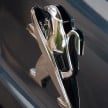
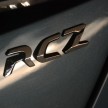
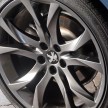
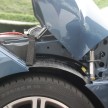
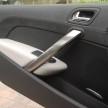
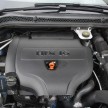
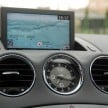
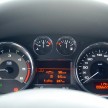
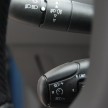
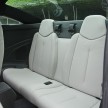
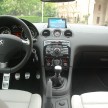
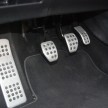
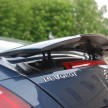
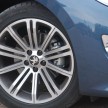
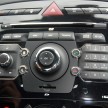
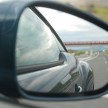
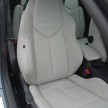
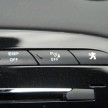
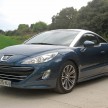
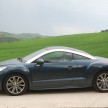
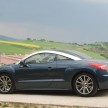
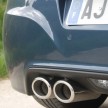
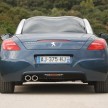
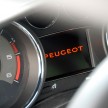
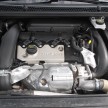
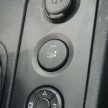
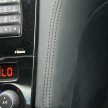
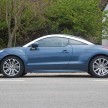
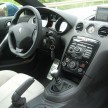
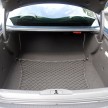
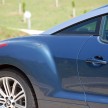
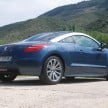
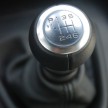
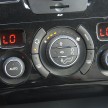
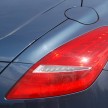


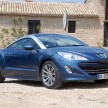
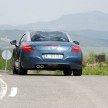
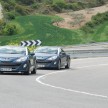
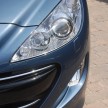
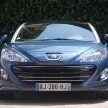











AI-generated Summary ✨
Comments about the Peugeot RCZ test drive highlight its stylish and eye-catching design, with many expressing admiration for its looks. Enthusiasts in Malaysia note that only a limited number were imported, selling out quickly, and express desire to see it locally. There are discussions about the expected price range, estimating between RM150,000 to RM220,000, with some fearing it may be priced above RM200,000, which could affect sales. Comparisons to other sports cars like the Audi TT, VW Scirocco, and Japanese models are frequent, focusing on performance and value. Several comments reflect hope that Naza will price it competitively to attract buyers, and some express disappointment at the lack of a convertible version. Overall, the sentiments are positive regarding its looks and potential appeal, but there are concerns about pricing and availability in Malaysia.